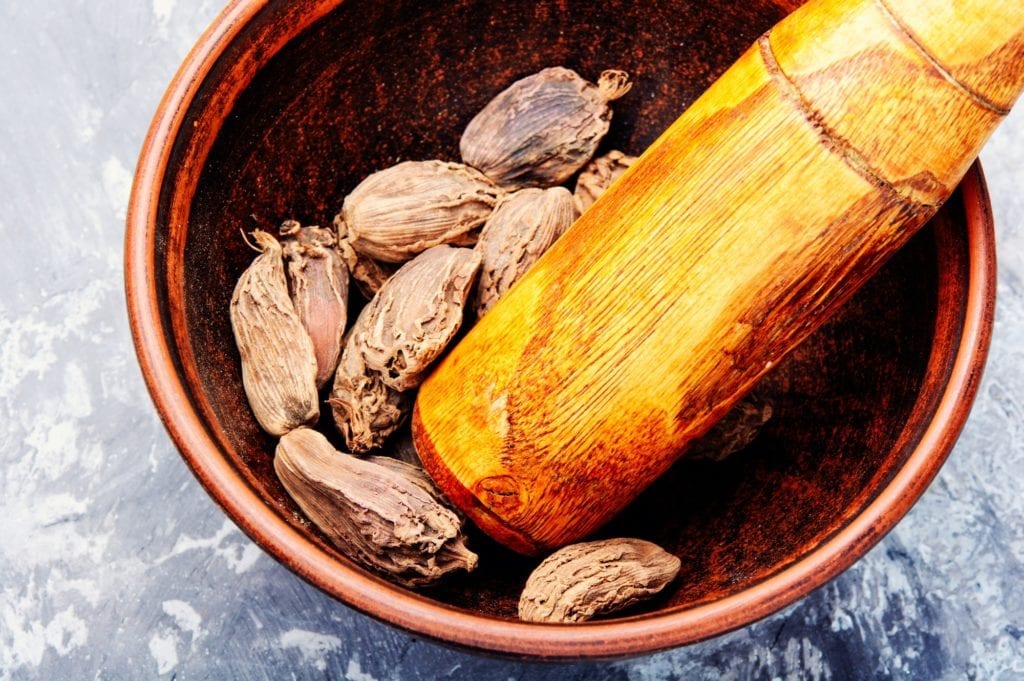
The cardamom plant which produces both the black and green cardamom seeds used in cooking is closely related to the ginger family.
The largest producer of black cardamom is Nepal, followed by Indian and Pakistan. There are two main species of black cardamom. The pods of amomum subulatum cardamom are used primarily in the cuisines of India. Its smoky flavour and aroma derive from traditional methods of drying over open flame.
Black cardamom is popular in Northern India along with other un-ground spices cinnamon, cloves and green cardamom. Black cardamom is sometimes known as brown cardamom.
Uses for Black Cardamom
In India and Pakistan black cardamom seeds are an important component of the spice mix garam masala. It is commonly used in lentil (dal) and rice dishes and also in making traditional tea (chai).
Black cardamom is felt superior to the green variety for spicy and rustic dishes. It can be used liberally as it doesn’t dominate a dish but enhances and intensifies the taste of other ingredients. Pods should be crushed before use but not completely so as to expose the seeds. This helps to keep the flavour. Unlike its green variety, black cardamom is rarely used in sweet dishes.
In China the pods are used for long braised meat dishes, particularly in Sichuan cuisine. The ground seeds are an optional ingredient to the Chinese five spice powder.
Black cardamom is also used for the treatment of malaria and stomach disorders.

